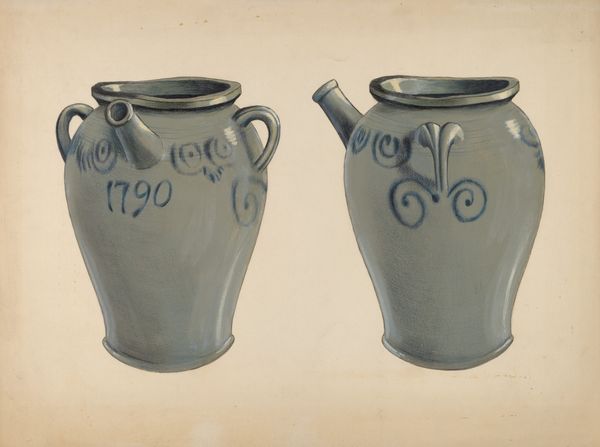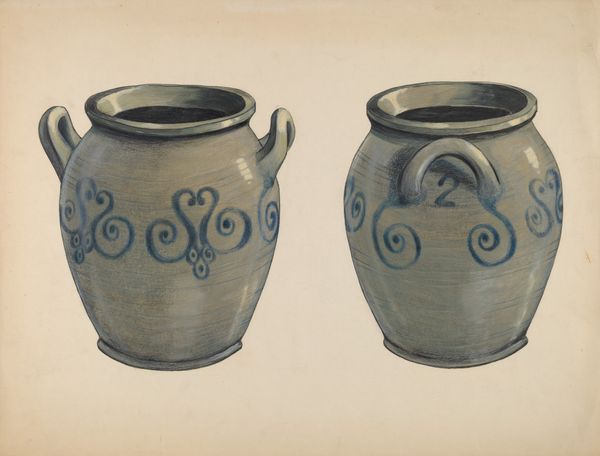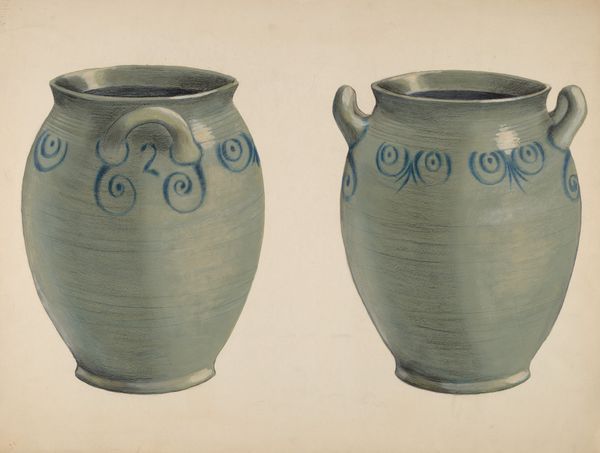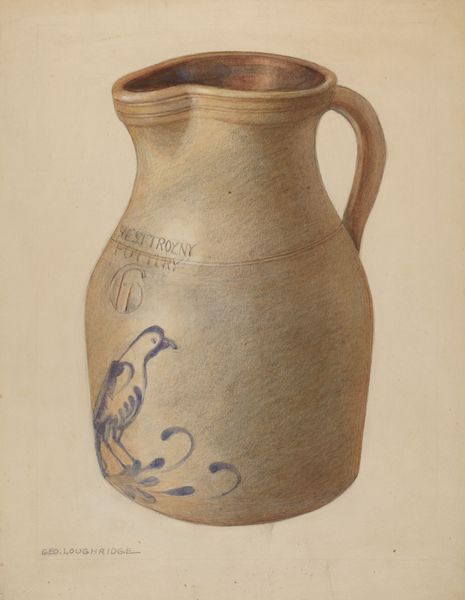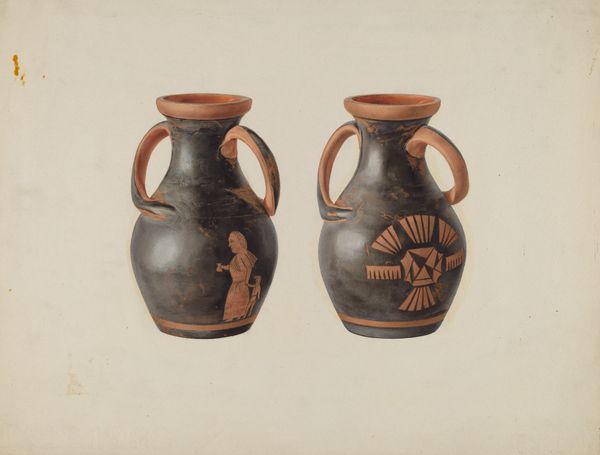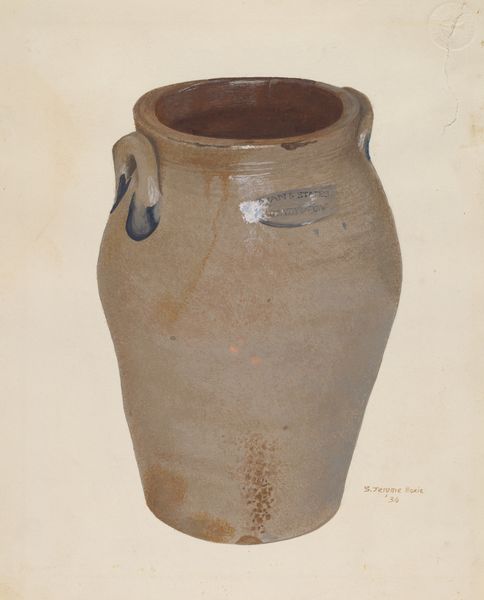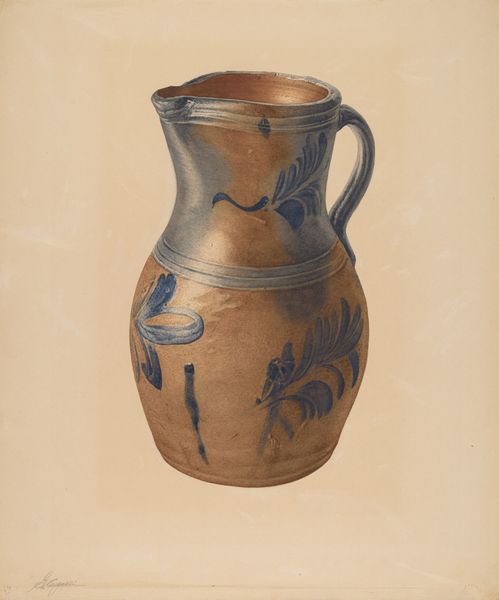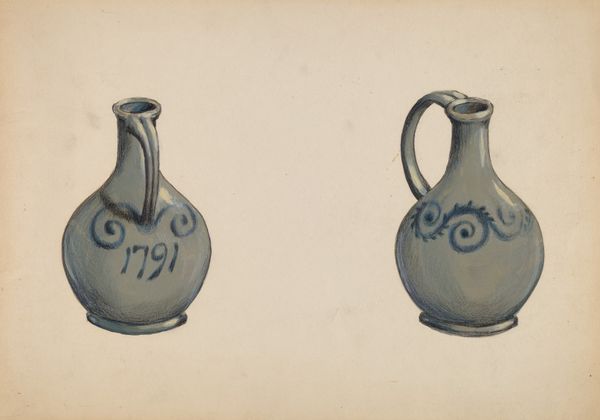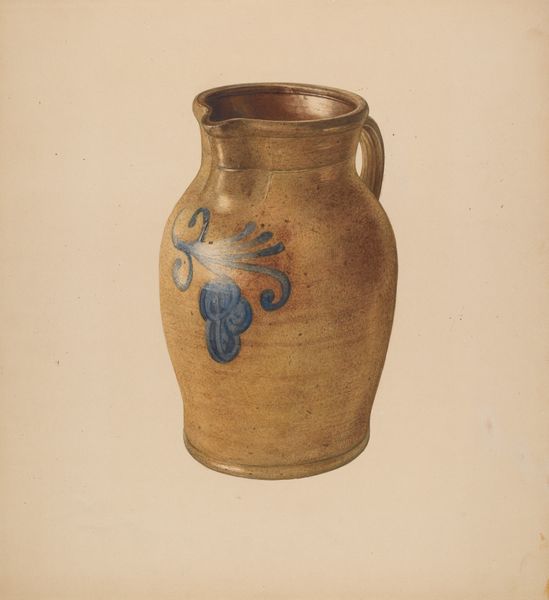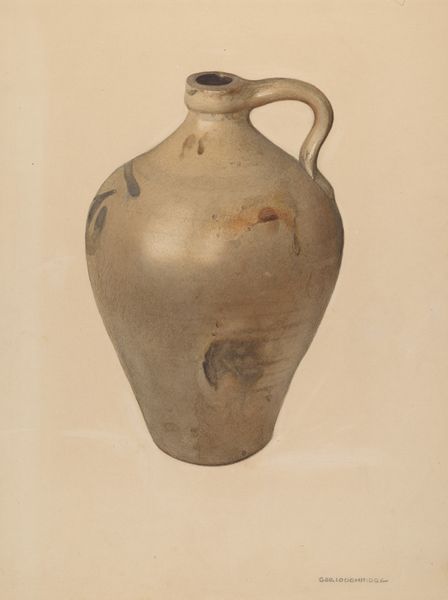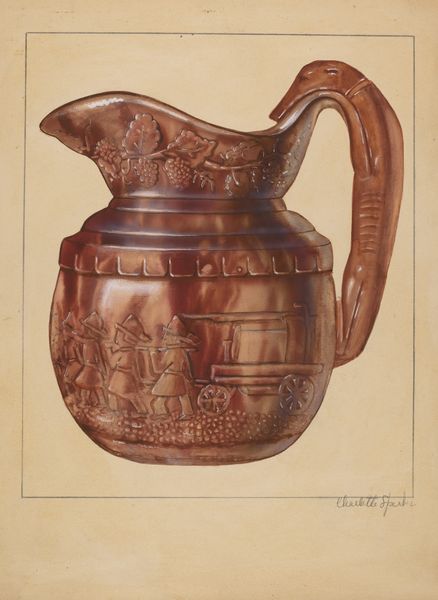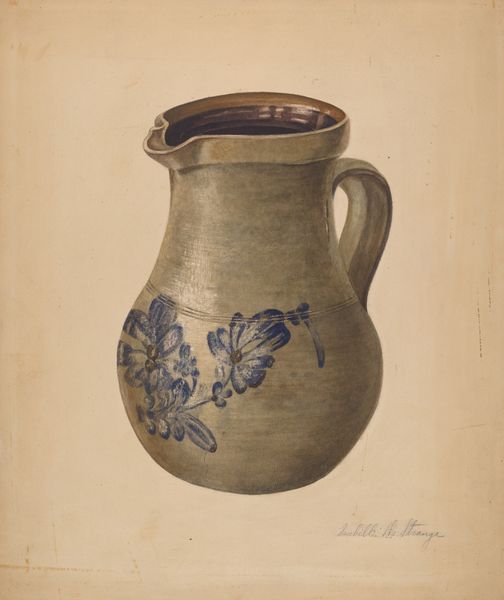
drawing, ceramic, watercolor
#
drawing
#
ceramic
#
charcoal drawing
#
oil painting
#
watercolor
#
watercolour illustration
#
regionalism
#
watercolor
Dimensions: overall: 38.1 x 45.4 cm (15 x 17 7/8 in.) Original IAD Object: 11" High
Copyright: National Gallery of Art: CC0 1.0
Curator: So, we’re looking at John Tarantino’s "Pitcher," a watercolor and drawing from around 1937. What are your first impressions? Editor: It's a lovely rendering. The colors are muted, almost monochrome, except for the blue accents. It feels very...utilitarian. How should we read this through a cultural lens? Curator: Consider Regionalism, the artistic movement prevalent at the time. It championed everyday American life, especially in rural areas. This pitcher isn't just a household object. What do you make of the fact that it includes text: West Troy Pottery? Editor: Well, it gives the pitcher a specific identity. It speaks to craftsmanship and the importance of local industry. Was this art style also communicating political ideals? Curator: Absolutely. During the Depression era, Regionalism served as a visual counter-narrative to urban alienation and industrial complexities. These paintings offered a sense of continuity, connecting to traditions rooted in labor and place. Note also the stylized bird: is it possible this adds an environmental dimension? How might this humble, utilitarian object invite discourse? Editor: It makes me wonder about the lives of the people who used this pitcher, about their connection to their environment, and about the economic landscape that shaped their world. What have you discovered? Curator: Exactly. For me, it underscores the power of everyday objects to reflect—and shape—collective identity. And the drawing asks viewers to acknowledge these questions too. We look at something "simple", but its complexity represents an expression of labor identity through American hands. Editor: This has helped me consider it as more than just a simple painting; I hadn't looked at it from a sociological perspective until now.
Comments
No comments
Be the first to comment and join the conversation on the ultimate creative platform.
